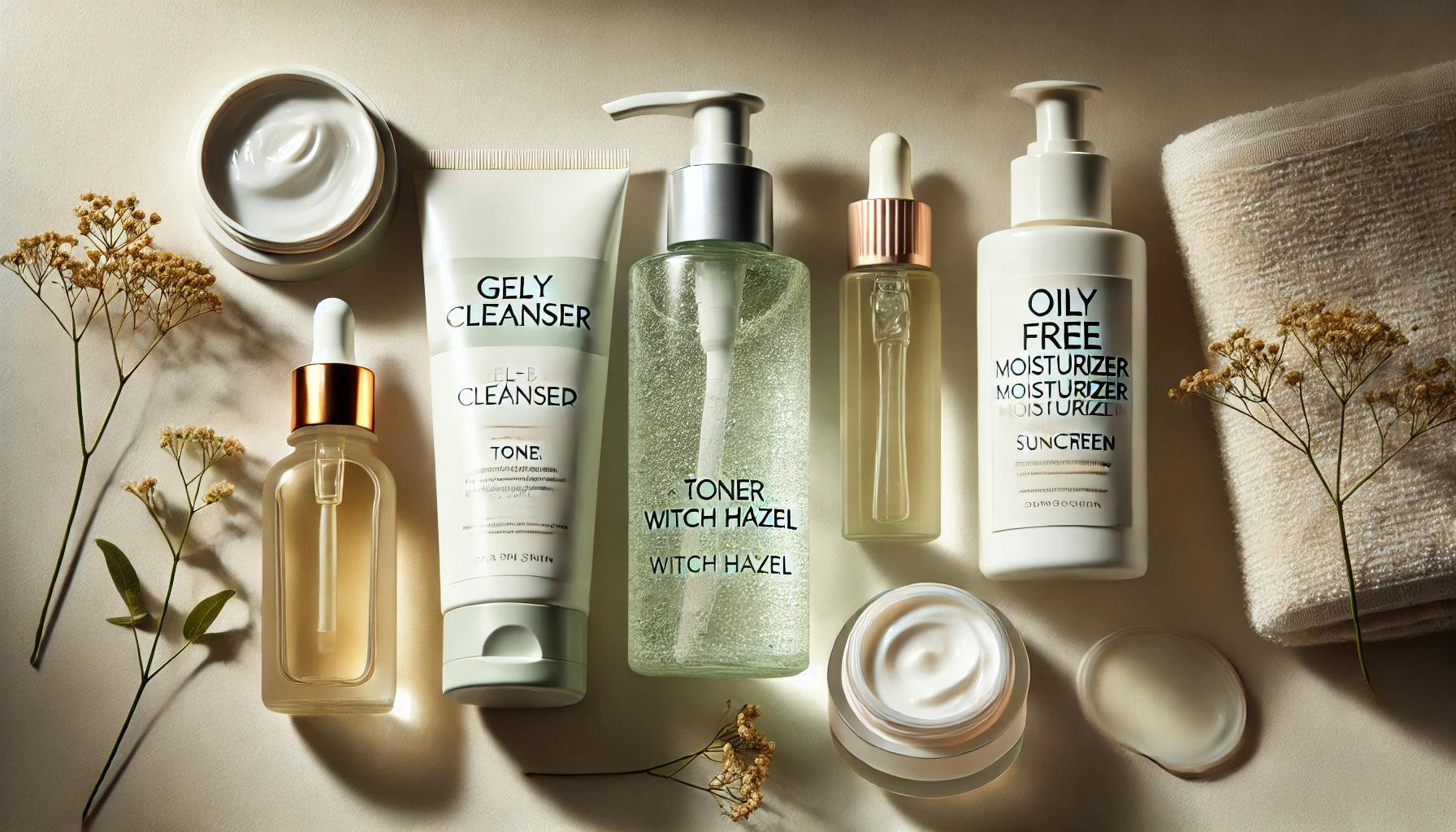If you have oily skin, you may struggle with excess shine, clogged pores, and acne. However, the right skincare routine can help balance your skin, reduce oiliness, and prevent breakouts. Finding the perfect products and following a good skincare regimen is crucial to managing oily skin. In this article, we’ll guide you through how to create an effective skincare routine tailored specifically for oily skin.
What Causes Oily Skin?
Oily skin is primarily caused by overactive sebaceous glands, which produce excess sebum (skin oil). Several factors can contribute to oily skin, including:
- Genetics: Oily skin can run in families. If your parents had oily skin, there’s a good chance you will too.
- Hormonal fluctuations: Puberty, menstruation, pregnancy, or birth control pills can trigger increased oil production.
- Weather: Hot and humid conditions can cause the skin to produce more oil.
- Diet and stress: A diet high in refined sugars and unhealthy fats, along with high-stress levels, can lead to more oil production.
While oily skin can be a challenge, with the right approach, you can manage the shine and maintain healthy skin.
Step 1: Cleanse Your Skin Twice a Day
Cleansing is the first and most important step in your oily skin routine. It removes excess oil, dirt, and impurities from your skin and helps prevent clogged pores and breakouts.
How to Choose a Cleanser for Oily Skin:
- Gel-based cleansers: These are great for oily skin because they’re often lightweight and help remove excess oil without stripping the skin.
- Foaming cleansers: A good option if you want something that removes oil and leaves your skin feeling fresh and clean.
- Non-comedogenic formulas: Look for cleansers labeled as “non-comedogenic,” meaning they won’t clog pores.
How Often to Cleanse:
- Morning and night: Cleanse your skin twice a day, in the morning and before bed, to remove dirt and oil buildup.
- Avoid over-cleansing: Cleansing more than twice a day can irritate the skin and trigger more oil production, so stick to a morning and evening routine.
Step 2: Exfoliate Regularly
Exfoliation is important for oily skin because it helps remove dead skin cells that can clog pores and lead to acne. However, it’s essential not to over-exfoliate, as this can strip the skin and cause it to produce even more oil.
How to Exfoliate Oily Skin:
- Exfoliating acids: Look for products containing salicylic acid (a beta-hydroxy acid) or glycolic acid (an alpha-hydroxy acid). Salicylic acid is great for oily and acne-prone skin because it penetrates the pores and helps remove excess oil and debris.
- Physical exfoliants: Use them sparingly, as harsh scrubs can irritate your skin. If you prefer a physical scrub, choose one with fine, gentle particles.
How Often to Exfoliate:
- 2-3 times per week: Exfoliate 2 to 3 times a week, depending on your skin’s needs. Over-exfoliating can lead to irritation and increased oil production.
Step 3: Use a Toner
Toners are an essential part of a skincare routine for oily skin, as they help balance the skin’s pH and tighten pores. Many toners contain ingredients that target excess oil and help control shine throughout the day.
How to Choose a Toner for Oily Skin:
- Astringents: Look for toners with ingredients like witch hazel, which help tighten the skin and control excess oil.
- Hydrating toners: Avoid toners with alcohol, as these can dry out your skin and trigger more oil production. Instead, choose hydrating toners with ingredients like glycerin or aloe vera to refresh the skin without causing dryness.
How to Apply Toner:
- After cleansing, apply a small amount of toner to a cotton pad and swipe it over your face, avoiding the eye area. Follow with your moisturizer.
Step 4: Moisturize Lightly
It may seem counterintuitive to moisturize oily skin, but moisturizing is essential for everyone, regardless of skin type. The right moisturizer can hydrate your skin without making it greasy.
How to Choose a Moisturizer for Oily Skin:
- Oil-free or gel-based moisturizers: Opt for lightweight, water-based moisturizers that hydrate without clogging pores or adding excess shine.
- Non-comedogenic formulas: Choose moisturizers labeled as non-comedogenic to ensure they won’t clog your pores.
How to Apply Moisturizer:
- Apply a light layer of moisturizer after toning, focusing on areas that tend to be drier. Avoid applying too much, especially in the T-zone (forehead, nose, chin), which may already produce excess oil.
Step 5: Protect Your Skin with Sunscreen
Sunscreen is crucial for everyone, including those with oily skin. Many people with oily skin skip sunscreen because they fear it will make their skin greasier, but this is a misconception. Sunscreen is vital to protect your skin from the harmful effects of UV rays and prevent premature aging and dark spots.
How to Choose a Sunscreen for Oily Skin:
- Oil-free, mattifying sunscreens: Look for lightweight, oil-free sunscreens that provide broad-spectrum protection and help control shine.
- Gel-based sunscreens: These formulas are perfect for oily skin as they feel light and absorb quickly without leaving a greasy residue.
How to Apply Sunscreen:
- Apply sunscreen as the last step of your morning routine, about 15-20 minutes before heading outside. Reapply every two hours, especially if you’re outdoors for extended periods.
Step 6: Consider Spot Treatments
If you have specific blemishes or breakouts, using a spot treatment can help target those areas. Look for products with salicylic acid, benzoyl peroxide, or tea tree oil to reduce inflammation and kill acne-causing bacteria.
How to Apply Spot Treatments:
- After moisturizing, apply a small amount of spot treatment directly onto the blemish. Use it at night or during the day as needed.
Conclusion: Consistency is Key
Building a skincare routine for oily skin can help control shine, prevent acne, and maintain a healthy complexion. The key is to use the right products, cleanse regularly, and maintain consistency. By following the steps above and finding products that suit your skin, you can effectively manage oily skin and enjoy clear, glowing skin.
